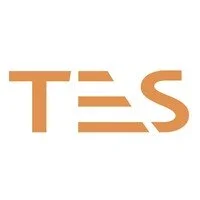IWA Individual Working Alone
Initial / Recert
Course Summary
This course is designed to train persons who have been nominated by their line manager/sponsor to enable them to attain the Individual Working Alone (IWA) competence.
The IWA competence is required to be held by anyone who is required to work on or near the line on their own.
The IWA course will take delegates through the procedures as set out in the Rule Book; Handbook 6 (General Duties of an IWA), Handbook 8 (IWA, COSS or PC blocking a line) and Handbook 9 (IWA or COSS setting up safe systems of work within possessions).
Course Aim
The aim of the course is to provide delegates with the skills and underpinning knowledge required to undertake Individual Working Alone duties in line with the Individual Working Alone unit of competence.
Pre-requisites & Requirements
Delegates must:
Must be a minimum age of 18.
Must not have a blue circle or red triangle on sentinel card in accordance with your medical level
It is the responsibility of delegates’ Local Manager to decide upon their suitability to attend this course, in accordance with the current issue of NR/L2/CTM/021-Competence and Training in Track Safety.
Additional Information
All PPE must meet the requirements of NR/L2/OHS/21 and RIS-3279-TOM and as a minimum be equipped with:-
High visibility upper body clothing with reflective tape, with Sentinel Sponsor Logo
High visibility lower body clothing with reflective tape
A safety helmet with Sentinel Sponsor Logo
Safety footwear to support ankle and protective toe cap
Suitable safety eyewear
Suitable safety gloves
What Does an IWA Do?
The Individual Working Alone (IWA) competence is fundamental for enabling a single person to work safely on or near the railway line without direct supervision from a COSS or other protection staff. It's designed for specific, low-risk tasks where the individual can adequately protect themselves from train movements by using their own vigilance and adherence to a defined safe system of work.
What is an IWA?
An IWA is a specifically trained and qualified individual who is authorised to work by themselves on or near the railway, typically within a General Protection Zone (GPZ). This competence allows a single worker to implement their own personal Safe System of Work, managing their immediate safety from approaching trains. They must maintain constant vigilance, be fully aware of train movements, and be capable of moving to a Position of Safety quickly.
Key Duties and Responsibilities of an IWA:
The IWA's role demands exceptional self-awareness, strict discipline, and continuous vigilance. Their duties are primarily focused on what is commonly known as PIE:
P - Patrol: Systematically walking along a designated section of track to observe its condition, identify potential issues, or gather information over a wider area.
I - Inspect: Carefully examining specific railway assets (e.g., rails, sleepers, signalling equipment, overhead lines) for defects, wear, or damage, often following a checklist or specific guidelines.
E - Examine: Conducting a more detailed and perhaps intrusive investigation of an asset or section of track to diagnose a fault or assess its integrity.
In addition to PIE, their responsibilities include:
Planning Personal Safe System: Before commencing work, the IWA must understand the work location, line speeds, train timetables, and local hazards, and plan their personal safe system of work.
Constant Vigilance: Continuously looking out for approaching trains from both directions. They must not allow their attention to be diverted from safety.
Awareness of Train Movements: Being fully aware of scheduled and unscheduled train movements on all lines in their vicinity.
Identifying Position of Safety: Always knowing and being able to quickly access a pre-identified Position of Safety (a place clear of all lines where staff can stand clear of moving trains).
Personal Responsibility: Taking full personal responsibility for their safety at all times, as they do not have the benefit of a COSS or Lookout.
Ceasing Work: Immediately ceasing work and moving to a Position of Safety if a train approaches or if their safety is otherwise compromised.
Communication: Carrying communication equipment (e.g., a railway radio) and being able to communicate with the Signaller or other authorised personnel if necessary.
Reporting: Reporting any safety concerns, defects, or incidents.
Where an IWA can work within TES:
The IWA competence allows TES personnel to perform specific, typically short-duration or inspection-based tasks efficiently without requiring a full work group and COSS. It's often utilised by:
Technical Services/Survey Teams: Conducting site surveys, detailed inspections, data collection, or fault diagnosis on infrastructure.
Permanent Way (P-Way): Performing minor track inspections or small-scale remedial works that fall within the PIE scope.
Electrification (OLE / 3rd Rail): Carrying out visual inspections or minor adjustments in non-electrified or safely isolated electrified areas.
Quality Assurance/Compliance Teams: Conducting independent checks or audits of completed work.
Management/Supervisory Visits: When a manager needs to conduct a brief, solitary site visit within the defined PIE activities.
Possession Management (with PS competency): As detailed below, an IWA with the additional Possession Support (PS) competency can directly support the Possession Management department.
Let’s Learn Together
Interested in our NSAR Gold Standard team training your staff?
Fill out some info and we will be in touch shortly!
We can't wait to hear from you!
Explore more of TES
Want to explore more of what TES have to offer? Use the search function below

